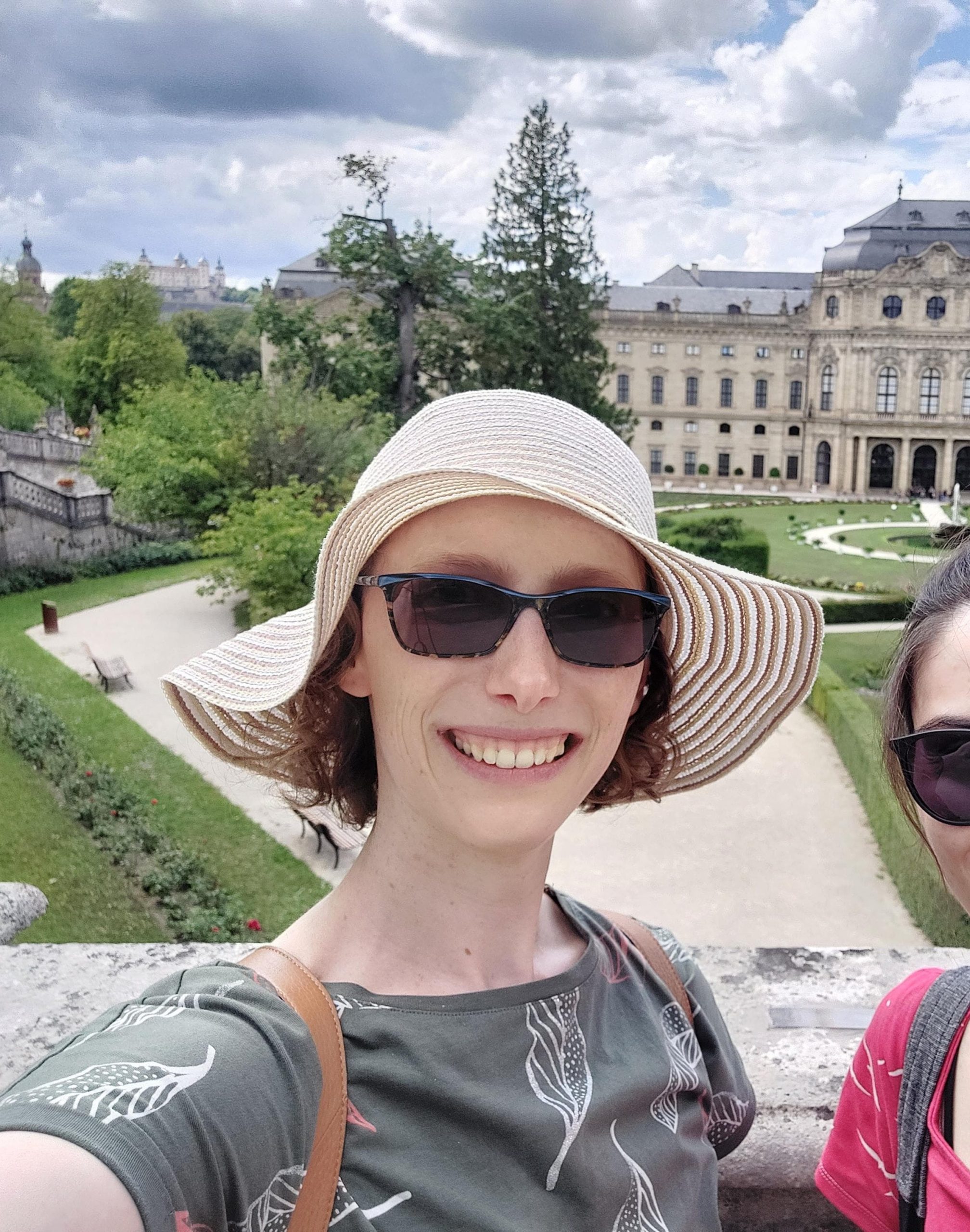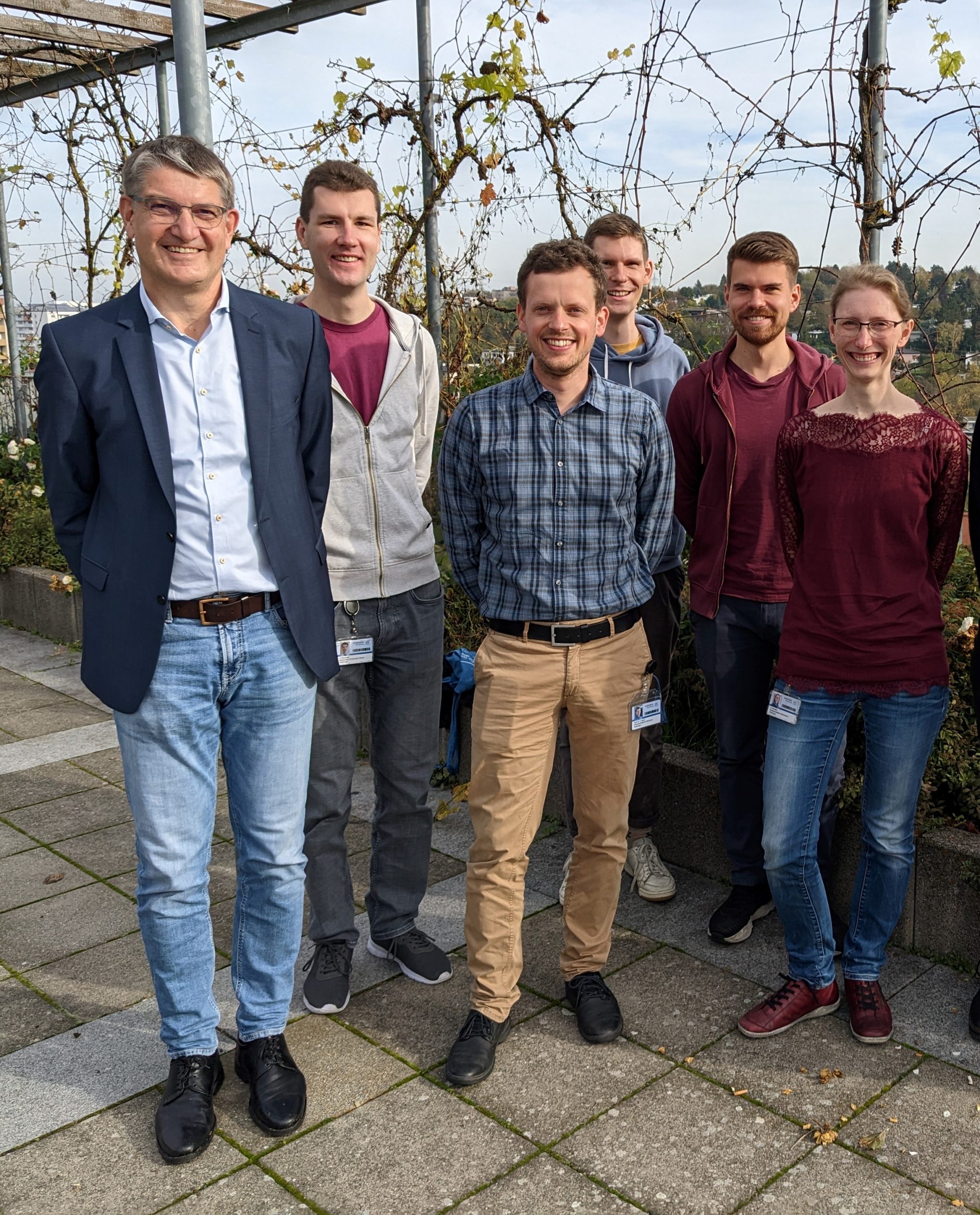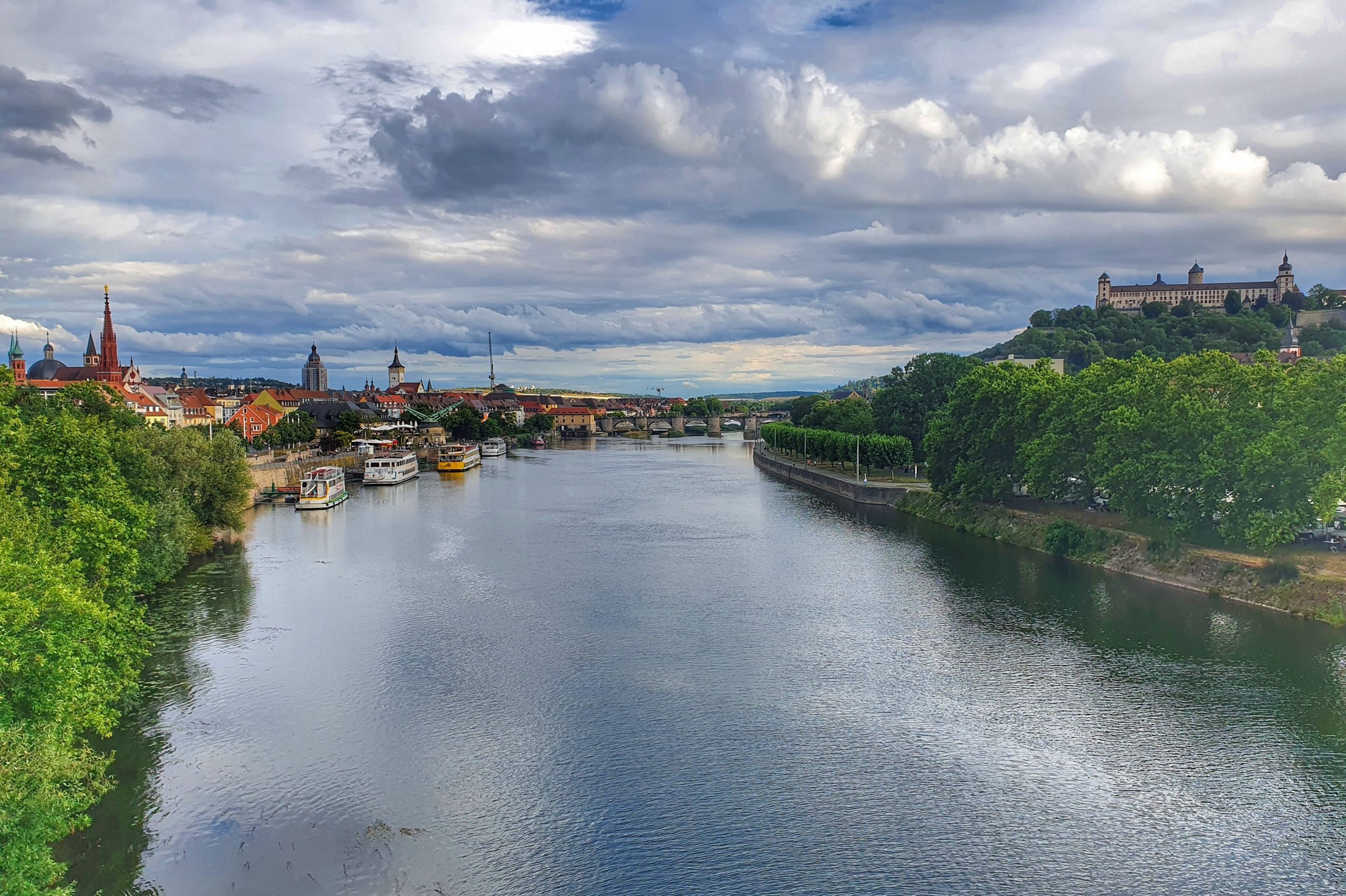By Mathieu Boudreau and Teresa Lemainque

This MRM Highlights Pick interview is with Hannah Scholten and Herbert Köstler, researchers at the University Hospital of Würzburg in Germany. Their paper entitled “Fast measurement of the gradient system transfer function at 7 T” was chosen as this month’s Highlights pick because it demonstrated exemplary reproducible research practices by sharing code in a well-formatted GitHub repository, shared scripts that reproduced figures, and also shared data.
MRMH: Can you tell us about yourselves and how you got into MRI?
Hannah: Sure. I actually decided that I wanted to get into medical imaging before I even started university. I attended a mathematics seminar for high school students in Berlin, and one of the lecturers there was a professor who designed some algorithms for computed tomography. I chose to study physics for my undergraduate degree at RWTH Aachen University, and did my bachelor thesis on the topic of magnetic particle imaging under Volkmar Schulz. I then did my master’s degree thesis on MRI fingerprinting (coincidentally, with Teresa who’s joining this call today). I moved to Würzburg for my PhD, and I’m now in the fourth year of my PhD and part of Professor Köstler’s group.
Herbert: I studied physics and mathematics at the Technical University of Munich and the University of Fribourg in Switzerland, and did my diploma thesis on solid state physics. But when I was looking for a PhD position, I came in contact with some MR groups, and I was happy to get a position in Ulm in the group led by Rainer Kimmich, who did a lot of work on magnetic resonance methods. Now I hold a professorship in experimental radiology here at the University of Würzburg.
MRMH: Before jumping into the work reported in your paper, could you explain what the transfer function is and what it is for?
Hannah: Maybe it’s easier to explain the concept of the impulse response function, which is just the system transfer function but in the time domain (instead of the frequency domain). The impulse response function of any linear and time invariant system describes how that system reacts to an input in the form of a short external impulse that disturbs it. You can use this impulse response function to then calculate the system response for any arbitrary input shapes.
MRMH: When would a system be considered linear and time invariant?
Hannah: A linear system means that for any given output resulting from input, if the input is doubled then the resulting output would also double. And time invariance just means that if I apply the same input tomorrow, the output produced by the system will be the same as today.
MRMH: Thanks! Tell us about the work you did for this paper.

Hannah: With this project, we wanted to improve the measurement of the system transfer function of MRI scanner gradients, called the gradient system transfer function (GSTF). We developed a measurement method that requires only a spherical phantom and can measure the transfer function with a very high frequency resolution and with lower noise. The high frequency resolution of the GSTF is especially interesting when you want to look at mechanical resonances that last a long time.
Herbert: Importantly, the measurements for this new method are extremely fast.
Hannah: Yes, with this method we can measure the GSTF in 14 seconds for each gradient axis, whereas previous methods took at least several minutes.
MRMH: Are any specific pieces of equipment required for your method, besides a water phantom?
Hannah: No, the advantage of our method is that you only need a commonly available phantom. Some alternative methods use field cameras, which perform very well, but are not as easily implemented due to the extra hardware.
Herbert: Specialized equipment isn’t required, but you do need the special sequences or access to pulse programming; I don’t think that the vendors currently offer sequences that play out and measure triangular gradients in the way we do for determining the GSTF.
MRMH: What could happen if someone failed to take into account these deviations from nominal to actual gradient waveforms?
Hannah: The impact depends on your use of gradients. For example, accurate knowledge of the gradient waveforms is very important in non-Cartesian imaging (e.g., radial, spiral) in order to know the actual k-space trajectory and avoid image artifacts. This application is what we had in mind when we started this work.
MRMH: Why is it that the actual gradient waveform can deviate from the nominal waveform in an MRI experiment?
Hannah: Because of the dynamic switching of the gradient fields, there are time-varying magnetic fields that will induce currents in other conducting structures in the MRI scanner (known as eddy currents), and these currents also create magnetic fields that will distort the actual gradient fields in the scanner. And on top of that, the coils in the scanner housing vibrate due to Lorentz forces. Clearly, if the coil wiggles, the field will wiggle as well, causing other disturbances in the gradient waveforms. These mechanical resonances are more impactful at ultra-high fields (e.g., 7T), and appear narrower in the GSTF than at lower field strengths. That is why the high frequency resolution of our new method is advantageous for characterizing and correcting those resonances.
MRMH: In your paper you describe two scenarios of what you can do with your GSTF once you’ve measured it: 1) it can be used to correct the influence of the nominal-actual gradient difference after the measurement has been done, or 2) it can be used to prepare a good gradient pre-emphasis so that the actual gradient shape generated by the scanner approaches the nominal gradient shape you desire. Is one method better than the other?
Hannah: It really depends on the sequence. For example, if you’re using a bSSFP sequence, where it’s important that the gradients are balanced to physically get the desired effect during your measurement, then using a pre-emphasis calculated from your GSTF is really the best option because the effect on the magnetization during the measurement cannot be corrected post-hoc after your image has been acquired. But if the effects of the gradients only really concern the k-space trajectory, like when using a spiral spoiled gradient echo sequence, I don’t think it matters that much which gradient correction method you choose.
Herbert: That’s right — if the gradient is just guiding the imaging data, you can correct almost everything in the reconstruction. But if the magnetization itself is controlled by the gradient, like in bSSFP, or if you’re using them with special pulses, you will have to apply a gradient pre-emphasis because in these situations, the impact of the gradient distortions cannot be corrected later during image reconstruction. The other thing is, if the MRI vendors could be convinced to build in a gradient impulse response function-based pre-emphasis, many problems we encounter might be solved in a single step.
MRMH: Could AI play a role in further improving GSTF calculations?
Hannah: Yes, and it could do even more. I recall seeing an abstract of someone doing AI-based gradient waveform predictions at ISMRM in London (Title: “Gradient Waveform Prediction Using Deep Neural Network”). The GSTF is somewhat limited by assuming a linear and time invariant gradient system, but we actually know that those assumptions are not completely true. A neural network could maybe model nonlinearities better, which would be interesting to explore.
Herbert: If we used AI, could we calculate the GSTF very rapidly? Yes, and we are deeply convinced that the calculation could be done much, much faster. But as Hannah mentioned, we could maybe also describe the system even better, which could be important for animal imaging scanners, which use huge gradients. There, the GIRF (gradient impulse response function) model does not sufficiently describe the system, and a learned correction could maybe improve imaging, but that’s something to be explored in the future.
MRMH: Finally, do you mind telling us a little bit about your city, since some of our readers may not yet have been lucky enough to visit Würzburg?
Herbert: There are a lot of vineyards in the area, and even vineyards in the city close to the Main River. There’s also a beautiful castle on a hill.
Hannah: I definitely recommend coming to Würzburg, it’s a really beautiful city.





